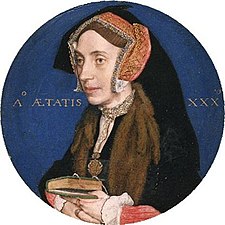
Hans Holbein the Younger: Confronting Mortality Through Art

**Hans Holbein the Younger’s *The Dance of Death*: A Reflection on Mortality in Renaissance Art**
Hans Holbein the Younger (1497–1543) is celebrated as one of the finest portraitists of the Northern Renaissance, known for his uncanny precision, eye for color, and meticulous detail. However, beyond his well-known portraits, his woodcut series *The Dance of Death* (*Der Totentanz*) stands as a chilling and profound exploration of life’s only absolute certainty: death. Created in the early 1520s, Holbein’s series is a masterful reflection on mortality, heavily influenced by the enduring trauma of the Black Death, which had ravaged Europe only a century prior.
### The Black Death’s Legacy: A World of Death and Ruin
The Black Death, which struck Europe between 1346 and 1353, remains one of the deadliest pandemics in human history, claiming over a third of Europe’s population. This catastrophic event left an indelible mark on European culture, fueling philosophical and spiritual reflections on the nature of life, death, and divine wrath. During the pandemic, villages were emptied, fields abandoned, and cities fell eerily silent as bodies piled up in mass graves.
Though Holbein was born over a century after this devastating plague, the cultural aftermath of the Black Death persisted, manifesting in art, literature, and religious discourse. The ubiquity of death in the plague’s wake transformed the European consciousness, making mortality a central theme across various artistic mediums. Artists sought to make sense of a tragic and seemingly random world where no one—priest, king, or peasant—was spared from death’s grip.
### The *Dance of Death*: A Response to a Traumatic Era
Holbein’s *Dance of Death* emerged from this environment steeped in reflections on mortality. The tradition of the *Danse Macabre*, or “Dance of Death,” was already well-established in Europe by the time Holbein took up his engraver’s tools. Originating in France during the mid-15th century as a response to the Black Death, early *Danse Macabre* artworks depicted skeletons leading people of all social classes—monarchs, clergy, peasants—in a grim procession toward the grave. This allegory of death’s inevitable claim over all humans, regardless of status, had deep psychological and cultural resonance in post-plague Europe.
*The Dance of Death* is composed of 41 woodcuts, with Holbein’s striking designs brought to life by the masterful cutting of the woodblock artist Hans Lützelburger. Each image depicts figures from various walks of life—emperors, kings, bishops, peasants, and children—interacting with deathly skeletons that either mock their vanity or guide them gently into oblivion. Far from somber, these skeletons are often depicted in ironic jubilation, tugging and prodding their human companions in a dance they will never escape.
### Universality of Death in Holbein’s Work
In Holbein’s *Dance of Death*, death comes not only for the sinful but for all: the noble, the righteous, the innocent, and the corrupt alike. One of the most compelling prints is *The Emperor*, where a haughty monarch, resplendent in his robe and crown, is blissfully unaware of the grinning skeleton behind him, filching his crown and marking his inevitable demise. Similarly, in *The Bishop*, a skeleton clad in priestly vestments leads a bewildered bishop away from his flock, symbolizing not only the personal death of the individual but the death of authority and religious power.
In *The Ploughman*, a simple peasant toils in his field while death, in skeletal form, drives the horses. The scene is more poignant in its simplicity, reflecting the inevitable fate of even the most humble laborer. Meanwhile, *The Child* is heart-wrenching—a small child is led from a ramshackle hut while his family looks on in grief, reflecting the cruel realities of mortality for even the youngest members of society.
The universality of death presented by Holbein clearly shares roots with his humanist contemporaries, who emphasized the fleeting nature of earthly life and status. Holbein’s blatant display of skeletons overtaking those in power—religious, political, and economic—still resonates as a critique of the inequitable power structures of society. But more significantly, it serves as a meditation on the futility of such power in the face of death.
### Influence and Legacy
Though *The Dance of Death* was popular during Holbein’s lifetime, going through several editions, including unauthorized ones, the work gained a new prominence in the 19th and 20th centuries amid increasing philosophical explorations of existentialism. Holbein’s stark representation of death’s inevitability prefigures the themes of absurdism and nihilism, suggesting